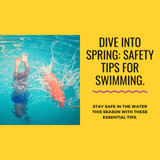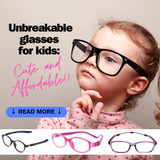Can snow damage your eyes?
Skiers and other winter sports enthusiasts need to be aware of the potential harm snow can cause to their eyes. Snow blindness- a type of photo-keratitis- is a condition that is strongly associated with skiing, snowboarding, and other winter sports. Those who enjoy sports involving long periods out in the snow need to wear appropriate ski goggles to protect themselves against this condition.
Photo-keratitis is the scientific term for an eye condition that is caused by exposure to ultraviolet (UV) rays. In effect, photo-keratitis basically means a sunburn of the eye. Photo-keratitis affects two main parts of the eye: cornea and the conjunctiva. Snow blindness refers to photo-keratitis that results from the sun's reflection on ice and/or snow into the eyes.
Winter Sports and Snow Blindness
Snow blindness is associated with skiers and snowboarders in particular because winter sports enjoyed in high altitude environments combine numerous conditions that leave the eyes more susceptible to UV ray damage. Not only are these activities carried out in snowy environments that reflect UV rays up into the athlete's eyes, but they're also carried out in high altitude environments where the air is thinner and provides less protection against UV rays.
Winter mountain sport conditions also leave the eye more susceptible to snow blindness and photo-keratitis because these environments involve dry air, which can put the cornea's surface at risk of freezing.
Protecting the Eyes and Recognizing the Symptoms of Eye Damage
It's important that winter sports participants are aware of the dangers of snow blindness. They need to protect their eyes against this condition with ski goggles that provide protection against UV radiation. They should also be aware of what the symptoms of snow blindness are so that they can seek out treatment immediately if they become affected by the condition.
Remember to always wear a pair of trustworthy ski or snowboard goggles such as Snowledge. Not only do they offer a comfortable design, they're made to fit comfortably over helmets, prescription glasses, and provide wider visibility. If you're looking for even more comfort, consider using prescription goggle inserts inside a pair of ski goggles!
Long Term Eye Damage
While snow blindness is usually a temporary condition, long term eye damage can develop once an individual experiences snow blindness and photo-keratitis numerous times. Often, a doctor will test a patient experiencing the condition using fluorescence dye. Fluorescence dye can be administered into the eye using as an eye drop to detect UV damage.
Eye Damage Treatment
When a doctor provides treatment for photo-keratitis, he or she will be looking to both ease the discomfort and prevent permanent damage. A cold compress is generally placed over the eyes to minimize swelling and relieve irritation. Also, eye drops are typically used to sooth the eyes. An ophthalmologist treating the condition might also recommend pain killers. As a further precaution, an ophthalmologist might also recommend antibiotics administered into the eyes to prevent infection.
Obviously, it's best to prevent snow blindness with UV ray blocking ski goggles. A case of snow blindness can make it so that you have to miss out on ideal ski conditions and prevent you from fully enjoying your next ski trip if you're not careful.
Prescription Swim Goggles – Sports Goggles – Ski Goggles
Leader in Prescription Goggles and Glasses
Kids RX Swim Goggles – Adult RX Swim Goggles – Prescription Sports Goggles - RX Ski Goggles

 Canadian Dollar (CAD)
Canadian Dollar (CAD)
 Euro (EUR)
Euro (EUR)
 British Pound (GBP)
British Pound (GBP)








